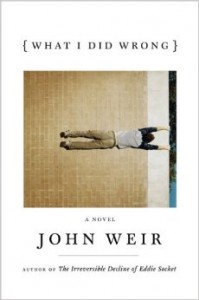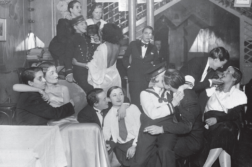Published in: September-October 2006 issue.
 (What I Did Wrong: A Novel)
(What I Did Wrong: A Novel)
by John Weir
Viking. 243 pages, $23.95
JOHN WEIR’S The Irreversible Decline of Eddie Socket and David Feinberg’s Eighty-Sixed, both published in 1989, were among the first novels to register the emotional cataclysm that was AIDS. Feinberg did so through outrageous black humor. His hero, B. J. Rosenthal, a wise-cracking, self-aware, sexually hungry young gay male, arrives in New York City in 1980, the year before a New York Times headline reported on a “Rare Cancer Seen in 41 Homosexuals,” which was for many the beginning of a nightmare from which there seemed no awakening.






